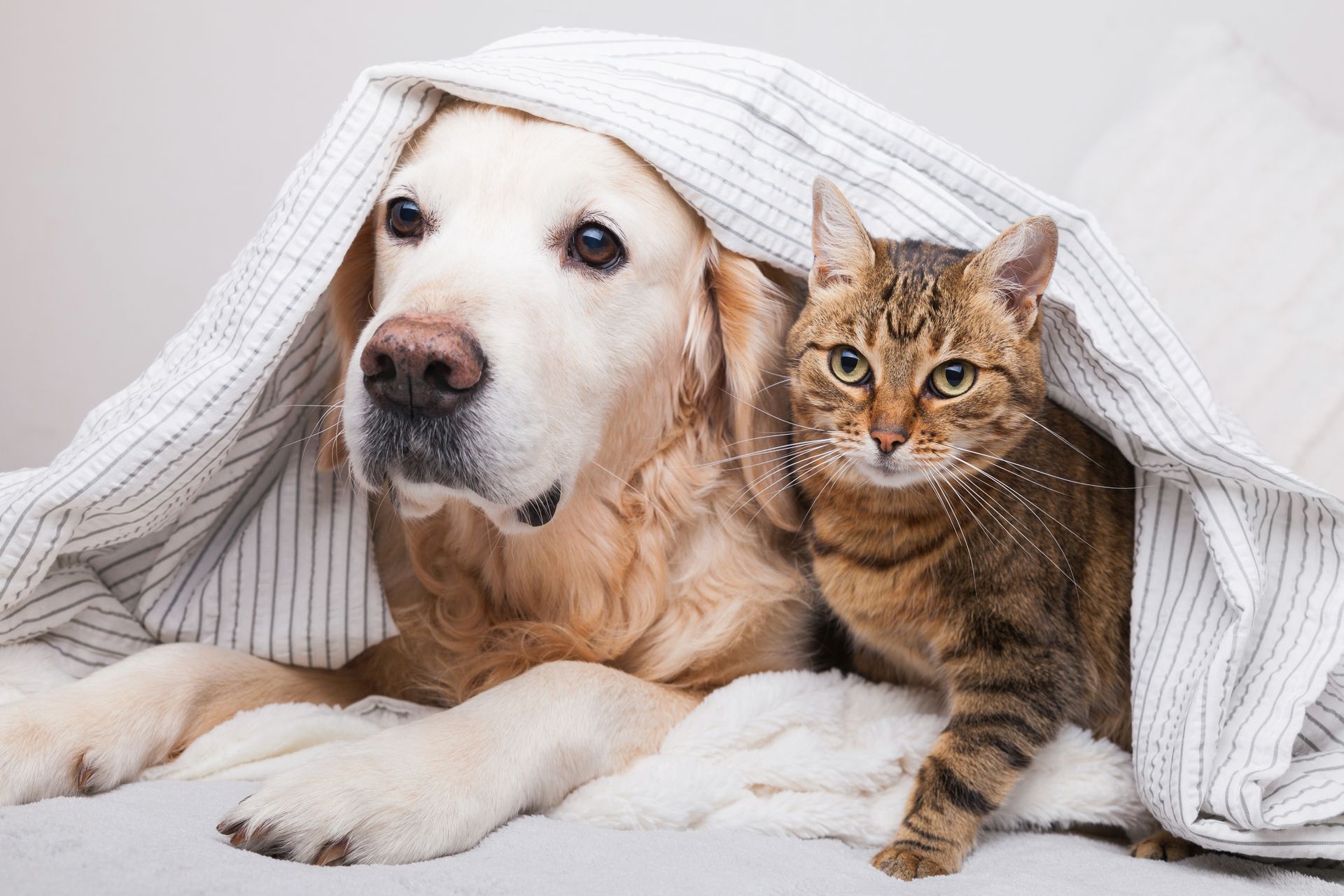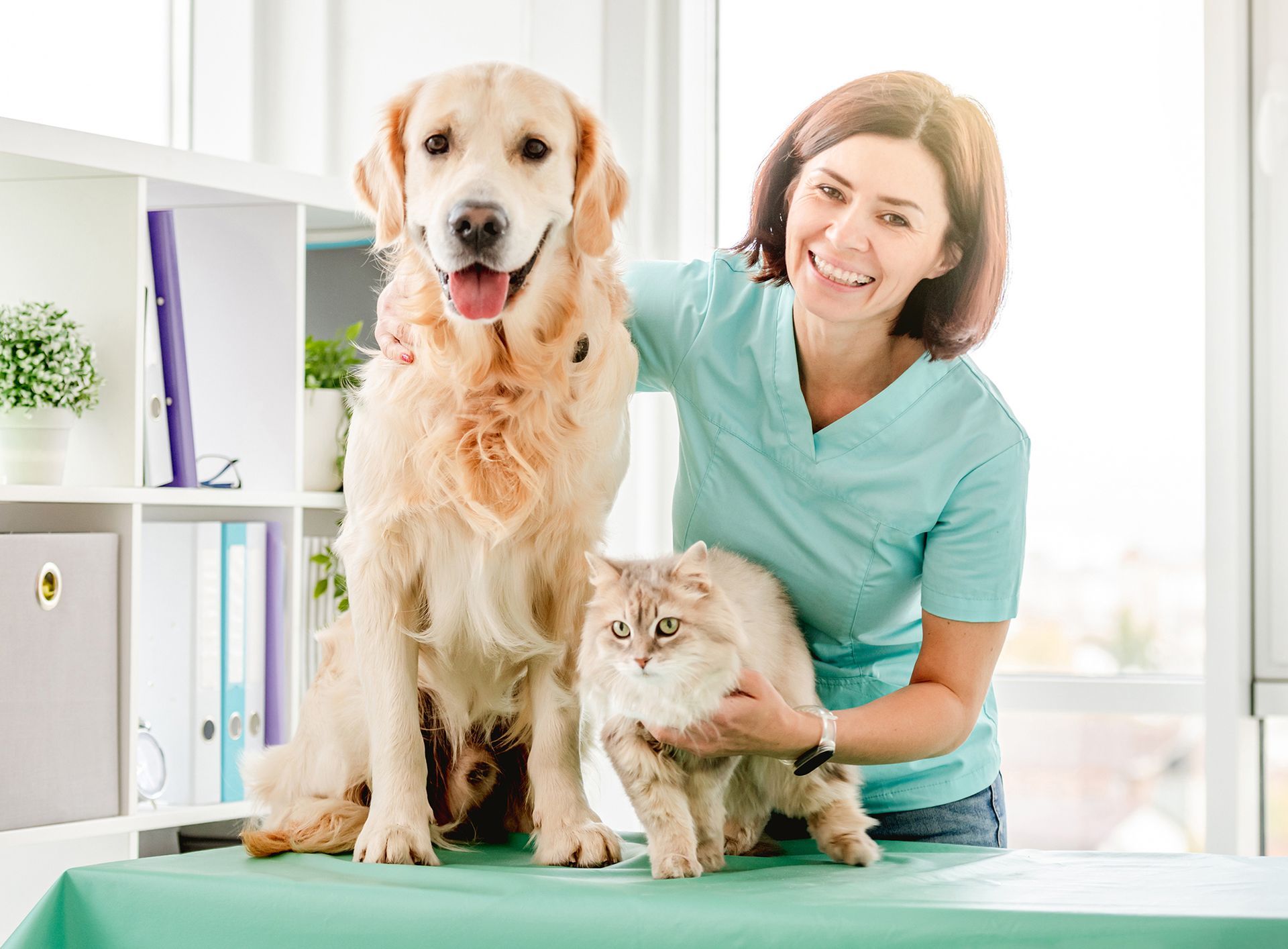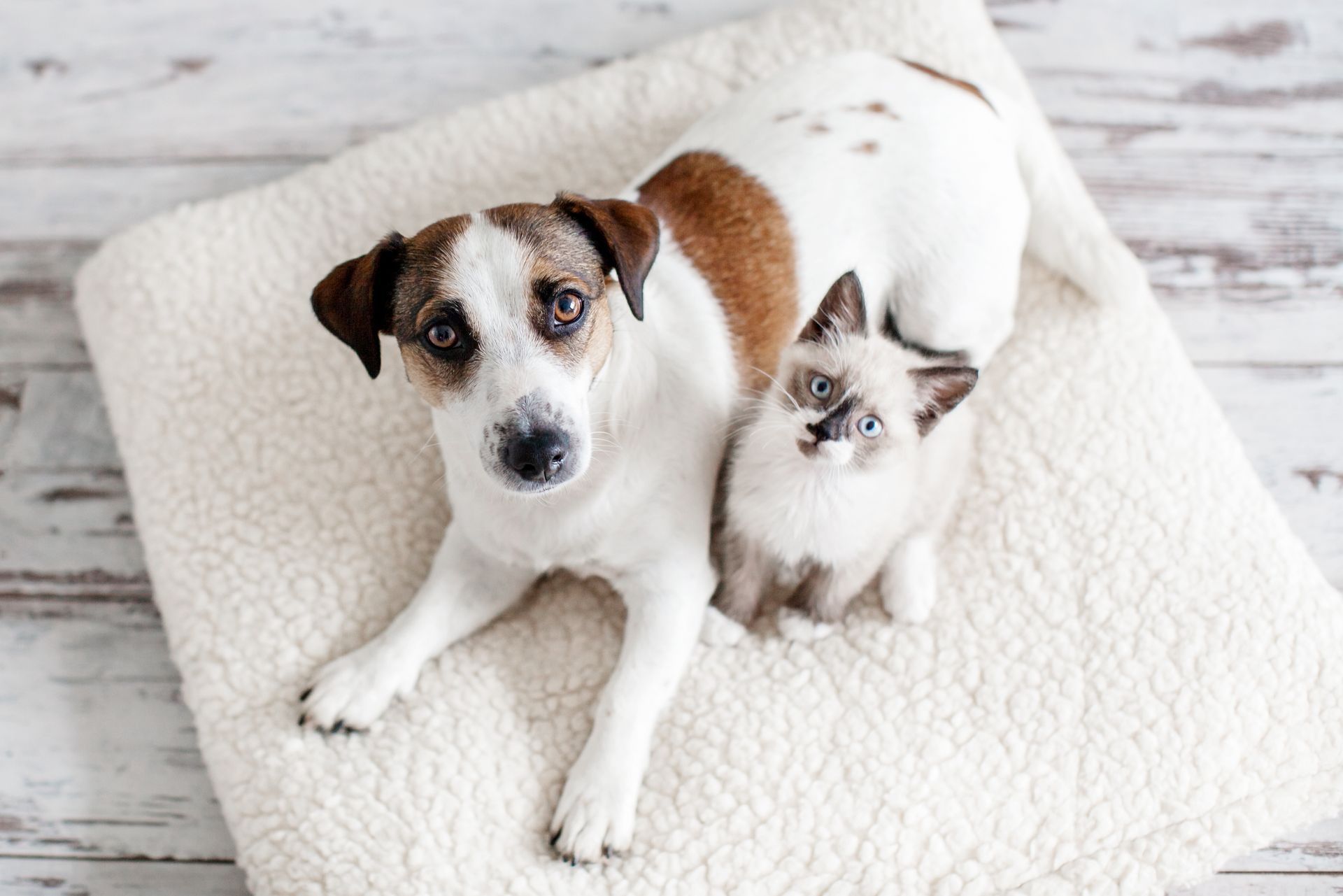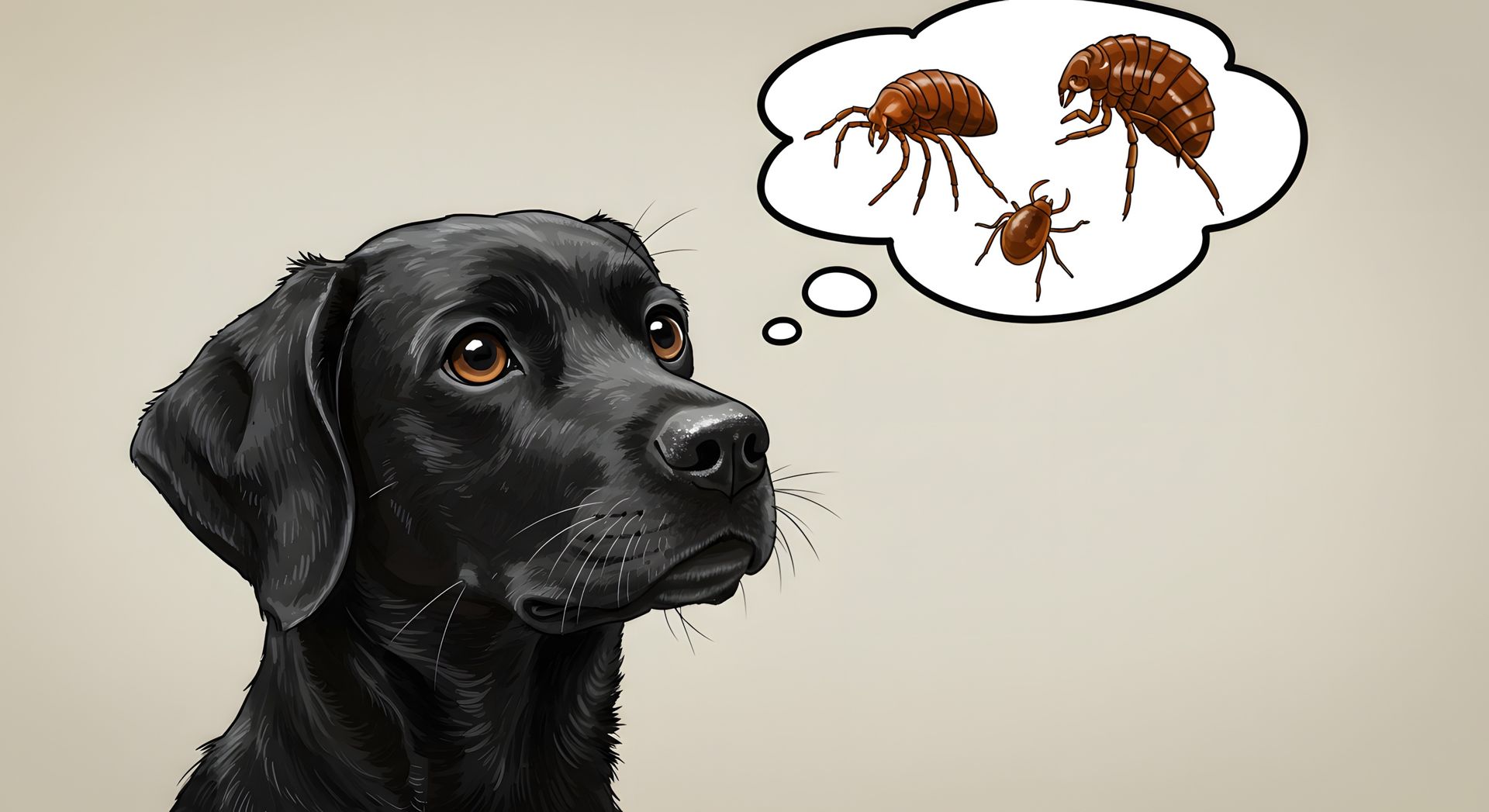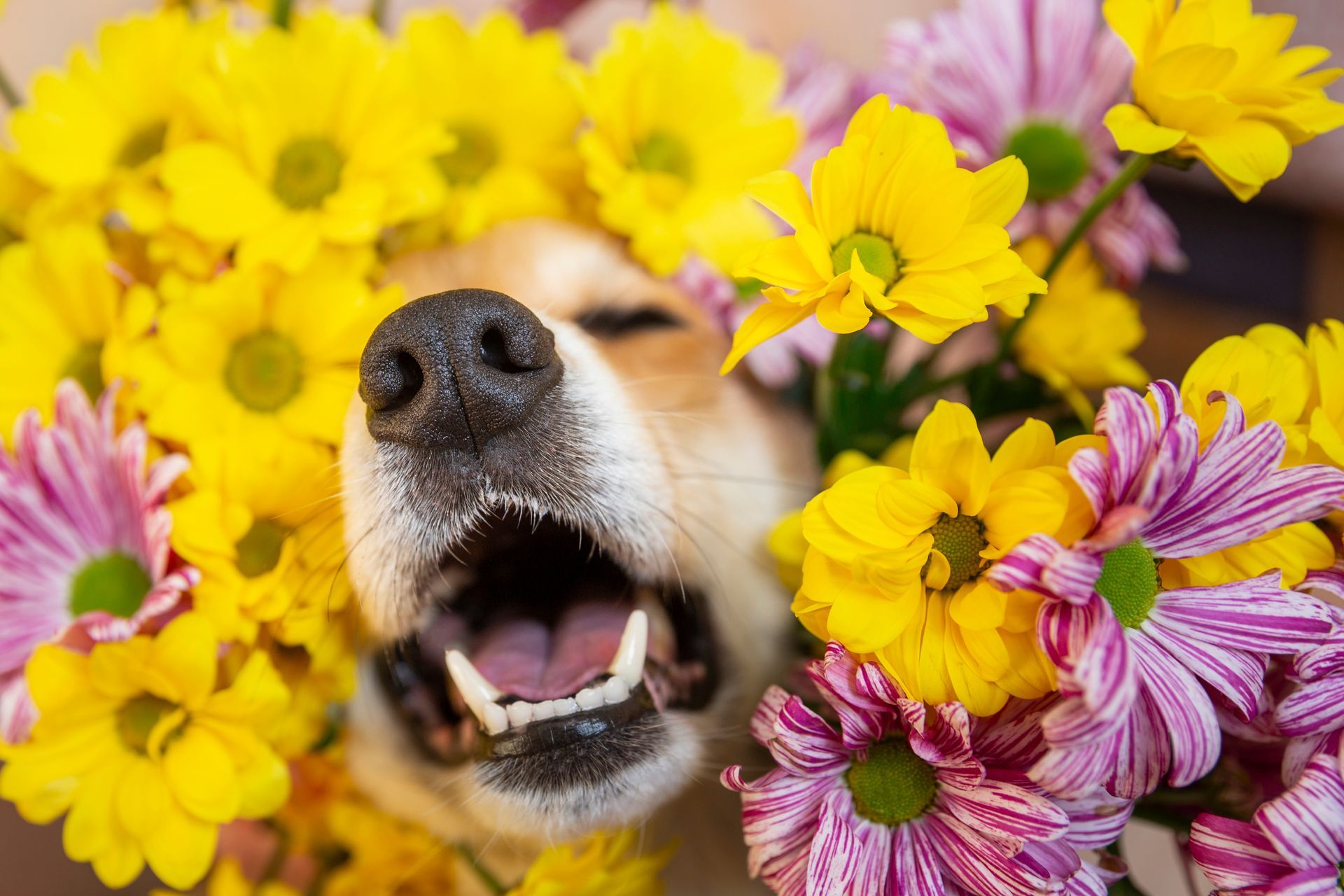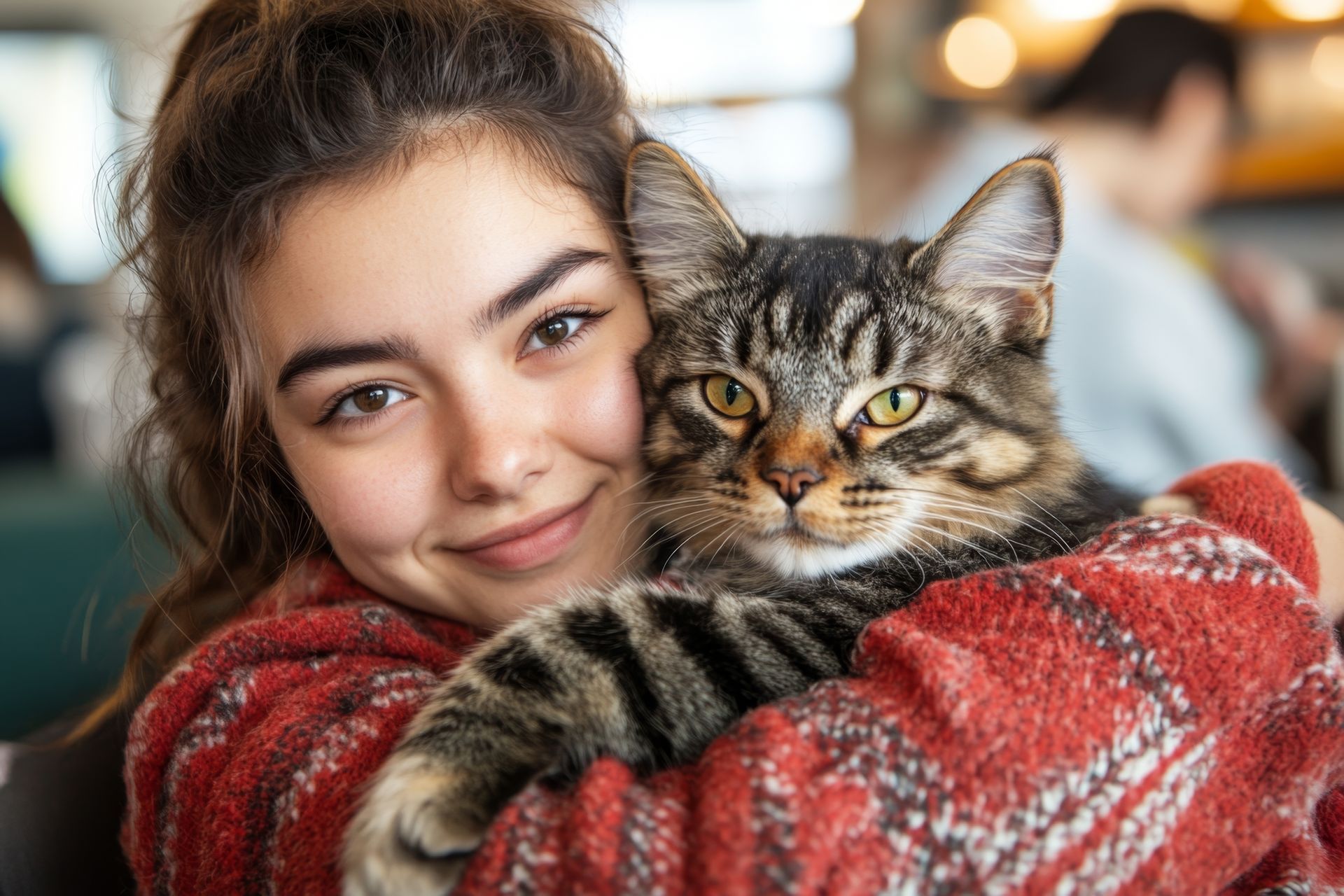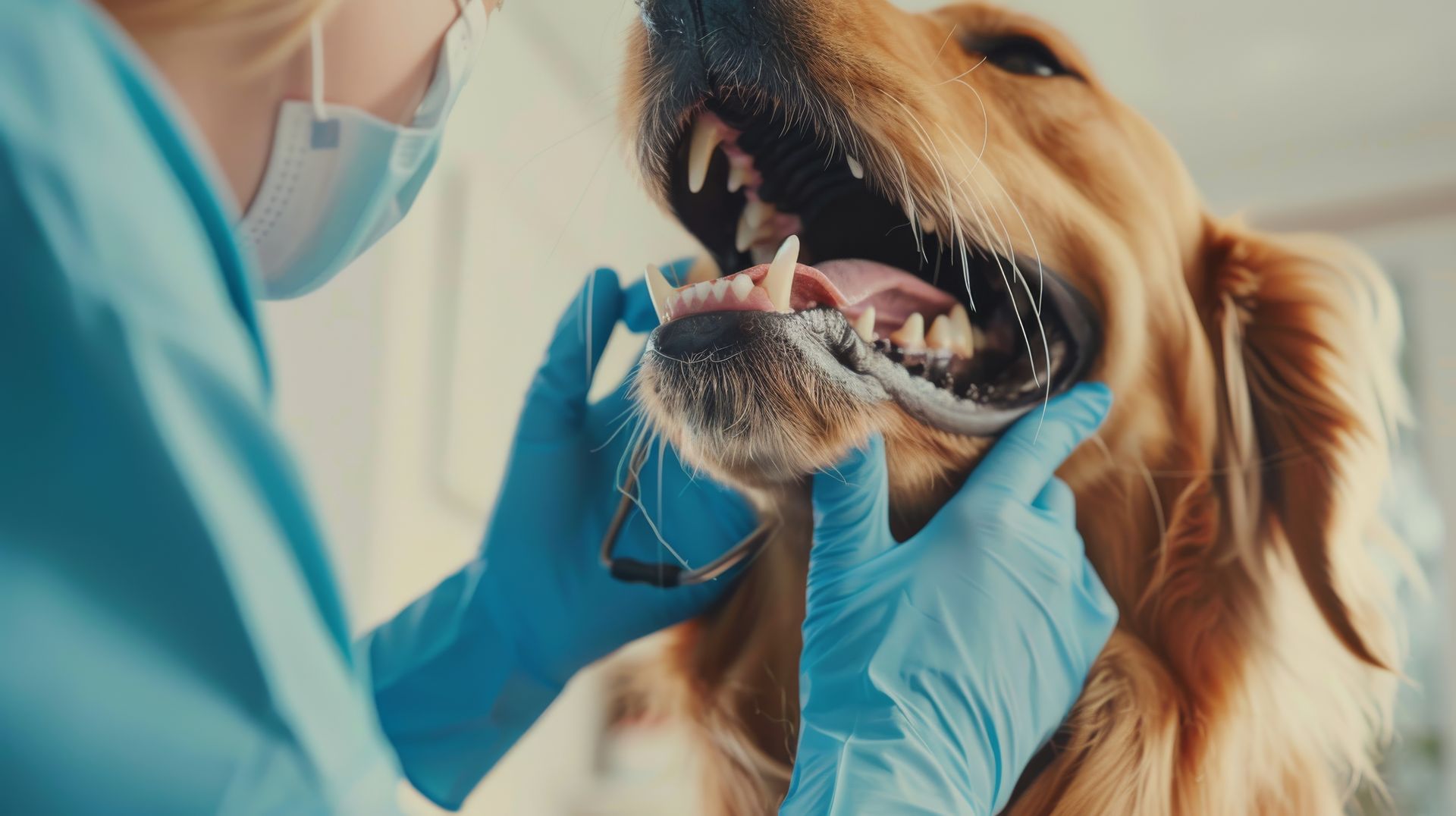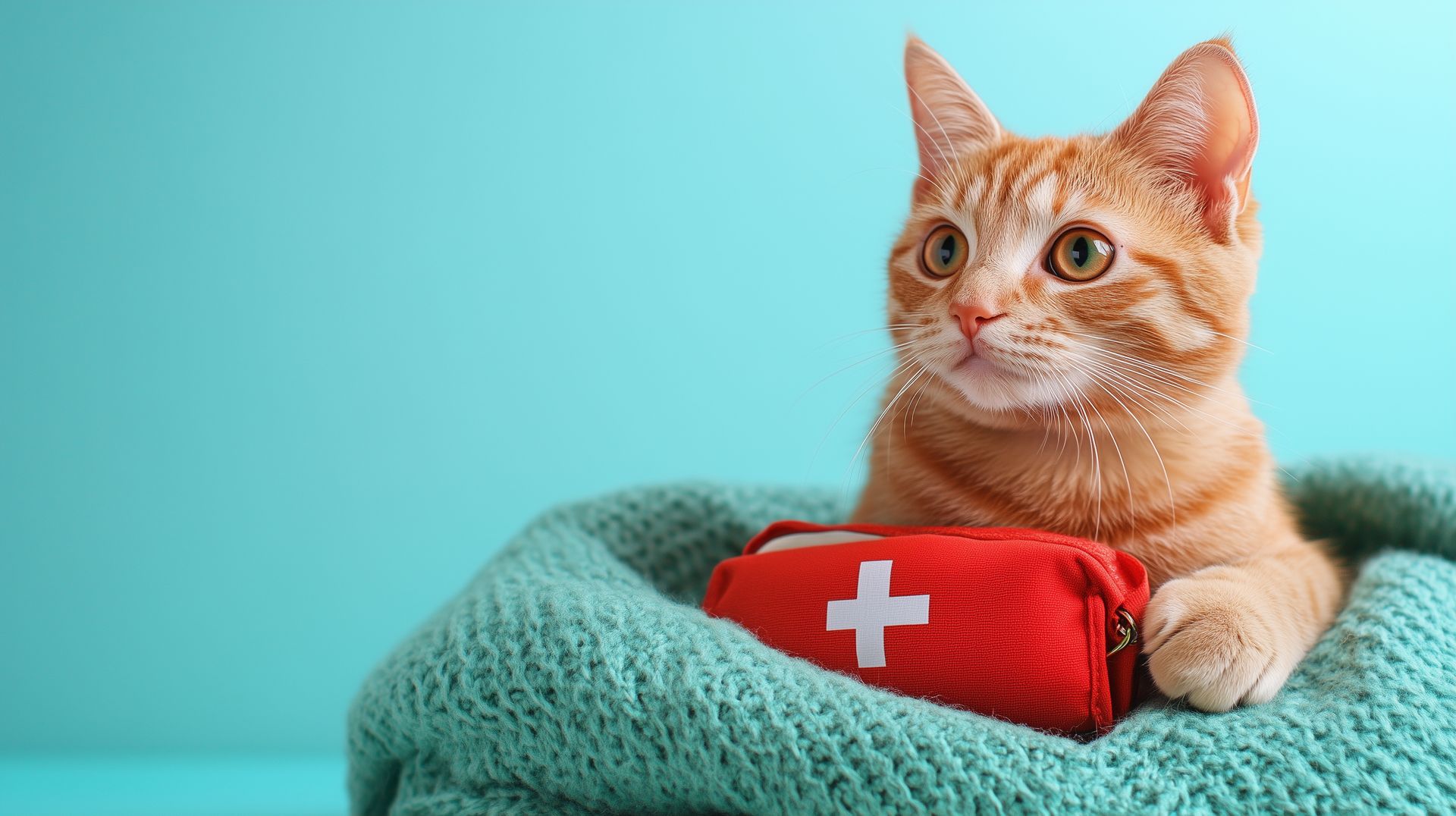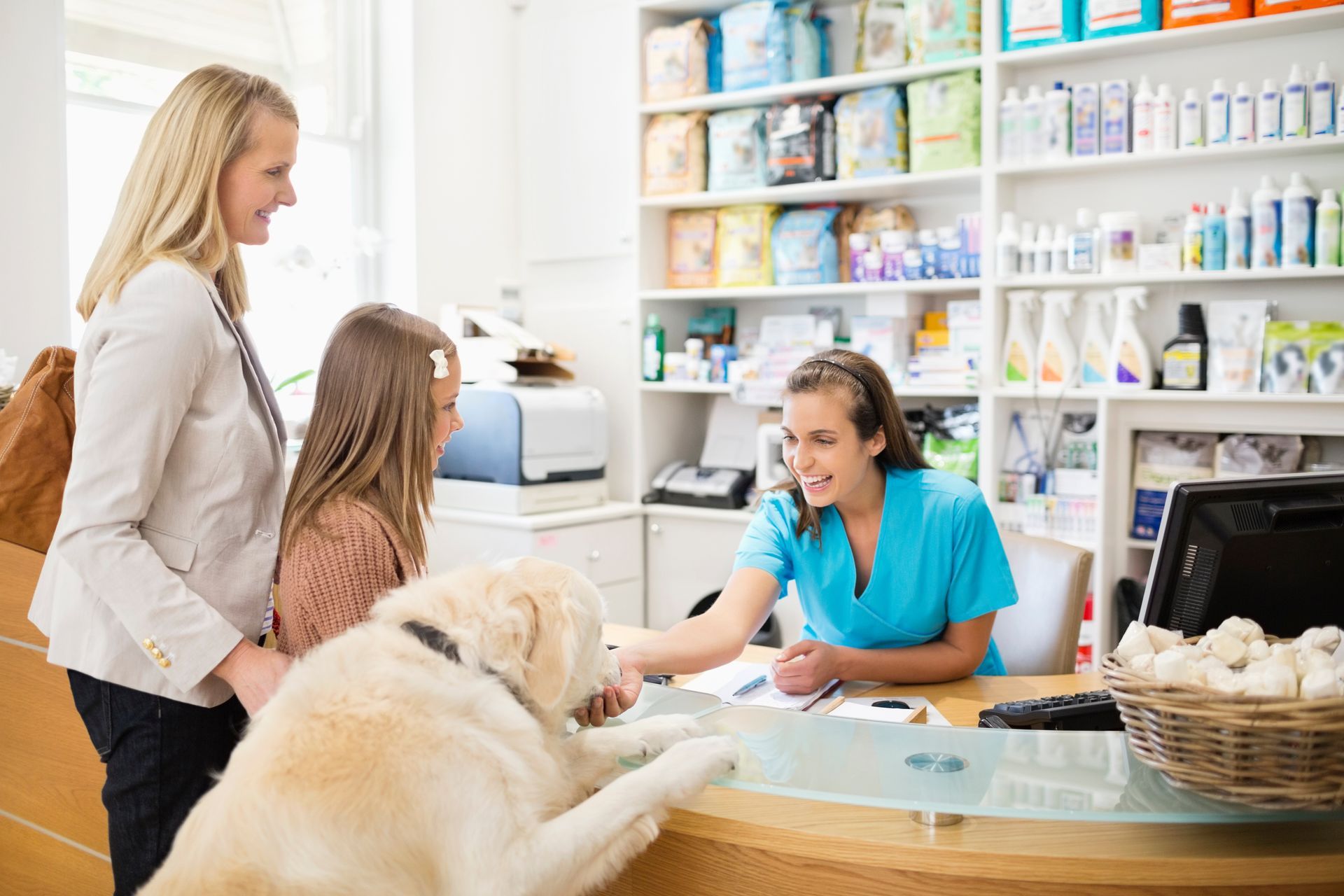Summer Pet Care: Tips for Keeping Your Pet Safe and Cool in Hot Weather
Key Points
- Heatstroke can occur when a dog's temperature reaches 108°F or a cat's temperature reaches 106°F - both can be fatal
- Never leave pets in parked cars when outside temperature is above 70°F, even with windows cracked
- Brachycephalic breeds (flat-faced pets like Pugs, Bulldogs) are at higher risk for heat-related issues
- Provide constant access to fresh water and shade; limit outdoor activities during hottest parts of the day (3-5 PM)
- Hot pavement can burn paw pads - test with the back of your hand before walks
- Regular grooming helps with heat management, but never shave dogs completely as their coat protects from sunburn
Summer in Texas means longer days, family barbecues, and plenty of outdoor fun. But as temperatures soar well into the triple digits, our beloved pets face serious health risks that many pet owners don't fully understand. Unlike humans, dogs and cats can't sweat like we do - they primarily cool themselves through panting, making them much more vulnerable to dangerous overheating.
At Castle Hills Animal Hospital, we see an uptick in heat-related emergencies every summer. The good news? Most of these scary situations are completely preventable with the right knowledge and preparation. Let's explore essential summer pet care tips that will keep your furry family members safe, comfortable, and healthy throughout the hottest months of the year.
Understanding the Danger: How Hot Weather Affects Pets
Why Pets Overheat So Quickly
Dogs and cats only have sweat glands on their paws, so their primary method of dissipating heat to cool themselves is through panting. When they're in an environment where they're recycling very hot air (like inside a car), panting gives no relief, and heatstroke can happen quickly.
Critical Temperature Thresholds
Heatstroke in dogs and cats happens when their body temperature rises too high. Normal temperatures are between 100 and 102.5 degrees Fahrenheit. A dog’s temperature of 108 degrees or a cat’s at 106 degrees can lead to severe organ damage or death.
High-Risk Pets
While all pets are susceptible to heat-related illness, some face higher risks:
Brachycephalic Breeds: Animals with flat faces, like Pugs and Persian cats, are more susceptible to heat stroke since they cannot pant as effectively. These pets, along with the elderly, the overweight and those with heart or lung diseases, should be kept cool in air-conditioned rooms as much as possible.
Age Factors: Young puppies and kittens, as well as elderly pets, have more difficulty regulating their body temperature.
Health Conditions: Overweight animals and those with heart, lung, or other medical problems face a higher risk of overexertion and overheating.
Coat Considerations: Pets with longer or darker fur and those with thick or dark colored coats may have extra trouble managing heat.
The #1 Summer Safety Rule: Never Leave Pets in Cars
Never leave your pet in a parked car when the outside temperature is above 70 degrees Fahrenheit — not even with the windows partway down, not even in the shade, not even for a quick errand.
Here's why this rule is so critical: In just 10 minutes, a car can heat up by 20 degrees, and in 30 minutes, the temperature can increase by 50 degrees. Even on a relatively mild 80°F day, the inside of a car can reach 104°F within 30 minutes.
What to Do If You See a Pet in a Hot Car:
- Note the car's make, model, and license plate number
- Ask nearby businesses to make an announcement to find the owner
- If the owner cannot be found, call local police or animal control
- Be prepared to act quickly - this is a life-threatening emergency
Recognizing Heatstroke: Signs Every Pet Owner Must Know
Early recognition of heatstroke symptoms can save your pet's life. Watch for these warning signs:
Early Signs:
- Heavy panting, even when lying down
- Excessive drooling
- Anxiousness or restlessness
- Seeking cool surfaces to lie on
Serious Symptoms:
- Dark red to purple-colored tongue and gums
- Vomiting or diarrhea
- Weakness or lethargy
- Difficulty breathing
- Unsteadiness or collapsing
- Loss of consciousness
For Cats Specifically:
- Open-mouthed breathing (cats rarely pant normally)
- Excessive grooming in an attempt to cool down
Emergency Response: What to Do If Your Pet Overheats
If you suspect heat stroke, take your pet's temperature rectally. Anything above 105 degrees means you need to cool the animal down immediately.
Immediate Steps:
- Move to a cool area - Get your pet out of the heat and into air conditioning or shade
- Gradual cooling - Apply cool (not ice-cold) water to ears, belly, and paw pads
- Offer small amounts of water - Let them drink if they're conscious and able
- Monitor temperature - Stop cooling efforts when they reach 103°F to prevent overcooling
- Seek veterinary care - Even if your pet seems better, internal damage may have occurred
Important Warning: Do not put an animal in cold water or cover them with a cold, wet blanket. Cooling a hyperthermic animal too quickly can cause their blood vessels to constrict, which will actually make it harder for them to cool down.
Keeping Pets Cool: Proactive Summer Strategies
Smart Scheduling for Outdoor Activities
The day will be the hottest towards late afternoon, around 3-5 p.m. Plan for walks in the early morning or evening hours to avoid the hottest times of the day. Strenuous exercise should be especially avoided during the hottest parts of the day, very humid days and during the early summer when pets may not yet be acclimated to the higher temperatures.
The Pavement Test
Don't let dogs linger on hot asphalt when the temperature is very high. Being so close to the ground, your pooch's body can heat up quickly, and sensitive paw pads can burn. Feel the pavement with the back of your hand - if it's too hot for you to hold your hand there for 5 seconds, it's too hot for your pet's paws.
Hot Surface Alternatives:
- Keep pets on grass when possible
- Use dog booties for protection
- Carry small dogs over hot surfaces
- Stick to shaded walking paths
Hydration is Key
Proper hydration is crucial for pets during hot weather. Provide access to clean and stable water sources at all times. Here are essential hydration tips:
- Multiple water stations - Place several bowls around your home and yard
- Fresh, cool water - Change water frequently and add ice cubes when possible
- Portable water - Always bring water for your pet on outings
- Avoid unsafe water sources - Never let pets drink from pools, ocean water, or street puddles
Signs of Dehydration:
- Dry gums and nose
- Sunken eyes
- Less elastic skin (skin doesn't bounce back when gently pinched)
- Lethargy or weakness
- Loss of appetite
Creating Cool Spaces
Indoor Comfort:
- Air conditioning creates an ideal escape from the summer heat for both pets and humans alike
- Fans can help but are less effective at cooling pets than people
- Provide cool spots like tile floors for pets to lie on
Outdoor Shade Solutions:
- Tree shade and tarps are ideal because they don't obstruct air flow
- A doghouse does not provide relief from heat - in fact, it makes it worse
- Set up kiddie pools for dogs who enjoy water
- Elevated cots allow air circulation underneath
Grooming and Coat Care for Summer
The Truth About Summer Haircuts
You can trim your dog's longer fur, but avoid shaving them entirely. The layers in a dog's coat help shield them from overheating and sunburn. It’s especially not advisable to shave breeds with a "double coat," such as Golden Retrievers, Pomeranians, and Huskies, since their fur serves as a barrier against various weather conditions, including heat.
Smart Grooming Practices:
- Regular brushing - Brush cats more often than usual to prevent problems caused by excessive heat
- Remove loose fur - This allows better airflow to the skin
- Professional consultation - Ask your veterinarian whether your pet would benefit from a warm-weather haircut
- Nail and paw care - Keep nails trimmed and check paw pads regularly for cracks or burns
Sun Protection for Pets
Yes, pets can get sunburned! Animals with flat faces, white or thin coats, or light-pigmented noses and eyelids are especially at risk.
Pet Sun Safety:
- Use sunscreens specifically designed for pets
- Limit sun exposure during peak hours
- Provide adequate shade during outdoor activities
- Watch for signs of sunburn: red, inflamed skin
Summer Activity Guidelines
Exercise Modifications
It's important to consult your veterinarian before beginning any exercise program for your pet. Both overweight animals and brachycephalic (short-nosed) dog breeds are at a greater risk for complications when exercising in warm weather. Ensuring your pet's safety and well-being during physical activity is essential.
Safe Summer Exercise Tips:
- Early morning or evening walks - Avoid the 3-5 PM peak heat
- Frequent breaks - Allow your pet to rest in shade
- Bring water - For both you and your pet
- Watch for signs of distress - Heavy panting, slowing down, or lying down
- Indoor alternatives - Use air-conditioned spaces for active play
Water Activities
Swimming can be a great way to keep pets cool, but safety is paramount:
- Never leave pets unsupervised around pools
- Introduce water gradually - Not all dogs are natural swimmers
- Use flotation devices - Especially for boat trips
- Rinse after swimming - Remove chlorine or salt from fur
- Provide fresh drinking water - Don't let pets drink pool, ocean, or lake water
Protecting Pets from Summer Hazards
Garden and Yard Safety
Plant Awareness:
- Be mindful of what you're planting in your garden
- Familiarize yourself with plants that may be toxic to pets
- Keep pets away from areas being treated with fertilizers or pesticides
Chemical Safety:
- Store lawn fertilizer and insecticides out of reach
- Follow safety instructions, especially regarding how long to keep pets out of treated areas
- Avoid cocoa bean mulch, which contains toxins similar to chocolate
Pest Prevention
Fleas, ticks, mosquitoes, and other parasites are more problematic during the summer, posing serious health risks to dogs and cats.
Parasite Protection:
- Keep pets up-to-date on preventatives
- Check for pests after outdoor activities
- Know how to safely remove ticks
- Watch for signs of allergic reactions to insect bites
Summer Travel and Event Safety
Holiday Precautions
Summer brings many celebrations, but some traditions can be dangerous for pets:
Fireworks Safety:
- Never use fireworks around pets
- Keep pets indoors during firework displays
- Create white noise with fans, TV, or radio
- Exercise pets beforehand to help them relax
BBQ and Party Safety:
- Keep garbage out of reach
- Don't allow pets to eat fatty or unfamiliar foods
- Keep alcoholic beverages away from pets
- Ensure guests know not to feed pets human food
When to Seek Veterinary Care
Emergency Situations
Contact your veterinarian immediately if your pet shows any of these signs:
- Temperature above 105°F
- Difficulty breathing or excessive panting that doesn't improve with cooling
- Vomiting or bloody diarrhea
- Weakness, confusion, or collapse
- Seizures
- Unconsciousness
Regular Summer Check-ups
Summer is an excellent time for wellness exams to ensure your pet is healthy enough for increased activity and heat exposure.
FAQs About Summer Pet Care Tips
How hot is too hot for my dog to be outside?
Generally, if the temperature is above 85°F with high humidity, limit outdoor time significantly. Brachycephalic breeds should avoid extended outdoor time when temperatures exceed 80°F. Always consider the heat index, not just air temperature.
Can I give my pet ice water to cool them down?
Yes, cool water is fine, but avoid ice-cold water which can cause shock. Room temperature or slightly cool water is best. Ice cubes as treats are generally safe for most pets.
How can I tell if the pavement is too hot for my pet's paws?
Place the back of your hand on the pavement for 5 seconds. If it's too hot for your hand, it's too hot for your pet's paws. Paw pads can burn at temperatures as low as 125°F.
Should I shave my long-haired dog for summer?
Never completely shave your dog. Their coat actually provides protection from heat and prevents sunburn. A light trim is acceptable, but consult your veterinarian first, especially for double-coated breeds.
What's the best way to keep my outdoor pet cool?
Provide multiple sources of shade, fresh water that's changed frequently, and consider a kiddie pool for dogs. However, the safest option is bringing pets indoors during extreme heat.
How much water should my pet drink in hot weather?
Dogs should drink approximately 1 ounce of water per pound of body weight daily, more in hot weather. Cats should drink about 3.5-4.5 ounces per 5 pounds of body weight. Increased drinking is normal in hot weather, but excessive drinking could indicate a problem.
FAQs About Castle Hills Animal Hospital
Does Castle Hills Animal Hospital offer emergency care for heat-related pet emergencies?
Yes! We offer same-day and emergency appointments for heat-related emergencies. If you suspect your pet is suffering from heatstroke, call us immediately at (469) 962-2060. We're equipped to handle these critical situations and provide the urgent care your pet needs.
What areas does Castle Hills Animal Hospital serve?
We proudly serve Lewisville, The Colony, Carrollton, Plano, Frisco, and surrounding areas in North Texas. Our hospital is conveniently located at The Realm in Lewisville, with easy access from multiple communities.
Can I get same-day appointments for summer wellness checks?
Absolutely! As an independently owned hospital, we welcome same-day appointments and walk-ins. We understand that summer brings unique health concerns for pets, and we're here to help ensure your furry family members stay healthy and safe.
What experience does Dr. Joy have with summer pet emergencies?
Dr. Sam Joy has over 30 years of experience in small animal medicine, including extensive experience treating heat-related emergencies and summer health issues. He's passionate about preventative medicine and has been serving the North Texas community since 2006.
Does Castle Hills Animal Hospital provide preventative care advice for summer?
Yes! We believe the best way to promote overall health is through preventative care. Dr. Joy and our team provide comprehensive guidance on summer safety, from heatstroke prevention to proper hydration and exercise modifications for hot weather.
What should I bring to a summer wellness visit?
Bring any questions about summer safety, your pet's current medications, and a list of activities you plan to do with your pet this summer. We'll help create a customized plan to keep your pet safe and healthy throughout the season.
Keep Your Pet Safe This Summer
Summer should be a time of fun and bonding with your pet, not a season of worry about heat-related emergencies. By understanding the risks, recognizing warning signs, and taking proactive steps to keep your pets cool and hydrated, you can ensure that your furry family members enjoy the season safely.
It's important to remember that prevention is always better than treatment when it comes to heat-related illnesses. Keep your pets indoors during the hottest parts of the day, never leave them in cars, and ensure they have plenty of fresh water and shade. Always trust your instincts; if something seems off about your pet's behavior or condition, don't hesitate to seek professional help.
At Castle Hills Animal Hospital, we treat every patient as if they were our own pet, providing the same loving attention and care. Our team consists of highly trained, experienced animal lovers who are dedicated to giving our patients the best possible care. Dr. Joy and our dedicated team are here to help you navigate summer safety and ensure your pets stay healthy year-round.
Don't let preventable heat emergencies ruin your summer fun. Stay vigilant, stay prepared, and remember that your veterinary team at Castle Hills Animal Hospital is always here to help.
If you have concerns about your pet's summer safety or need to schedule a wellness exam, call Castle Hills Animal Hospital today at (469) 962-2060 or visit castlehillsvet.com to book an appointment. Same-day and emergency visits are available because your pet's health can't wait!


